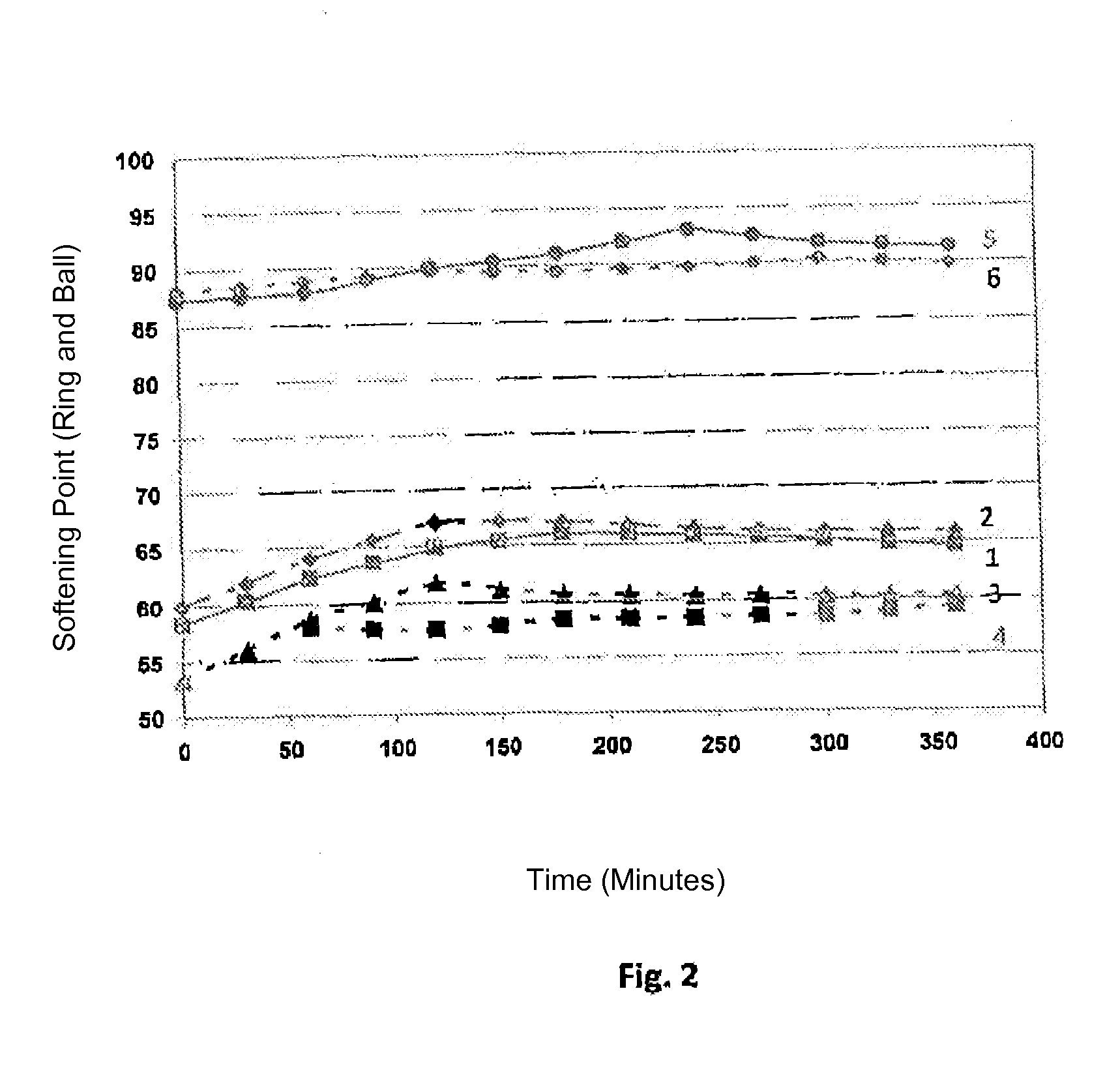Method for producing agglomerates having rubber and wax, agglomerates produced according to the method, and use of the agglomerates in asphalt or bitumen masses
- Summary
- Abstract
- Description
- Claims
- Application Information
AI Technical Summary
Benefits of technology
Problems solved by technology
Method used
Image
Examples
Embodiment Construction
[0196]The following Table 1 documents first the production of an agglomerate according invention, wherein a slightly agglomerated product of 66.6 wt.-% rubber particles (0.2-0.8 mm diameter), 16.7 wt.-% of various swelling agents and 16.7 wt.-% of Fischer-Tropsch paraffin wax with a solidification point of 102° C. are produced in a fluid mixer FM10 at a rotation speed of 3600 RPM:
TABLE 1MaximumMixingMixingProd-SwellingOrder ofTimeTemperatureuctAgentAddition(min)(° C.)Product Quality1FTSwelling7:5083Pourable,Paraffin*Agent, FThomogenous##Wax**2FTSwelling5:00120Pourable,ParaffinAgent, FThomogenousWax3Plant Oil#Swelling4:4086Pourable,Agent, FThomogenousWax4RecycledSwelling5:0586Pourable,lubricatingAgent, FThomogenousoilWax5RecycledFT Wax,3:4586Pourable,lubricatingSwellinghomogenousoilAgent*Waksol A (Fischer Tropsch paraffin, melting point 32° C.)#Storflux Nature**Sasobit ® (Fischer Tropsch paraffin wax, solidification point 102° C.)##The homogeneity of the distribution of the Fischer-T...
PUM
| Property | Measurement | Unit |
|---|---|---|
| particle size distribution | aaaaa | aaaaa |
| particle size distribution | aaaaa | aaaaa |
| temperature | aaaaa | aaaaa |
Abstract
Description
Claims
Application Information
 Login to View More
Login to View More - R&D
- Intellectual Property
- Life Sciences
- Materials
- Tech Scout
- Unparalleled Data Quality
- Higher Quality Content
- 60% Fewer Hallucinations
Browse by: Latest US Patents, China's latest patents, Technical Efficacy Thesaurus, Application Domain, Technology Topic, Popular Technical Reports.
© 2025 PatSnap. All rights reserved.Legal|Privacy policy|Modern Slavery Act Transparency Statement|Sitemap|About US| Contact US: help@patsnap.com



